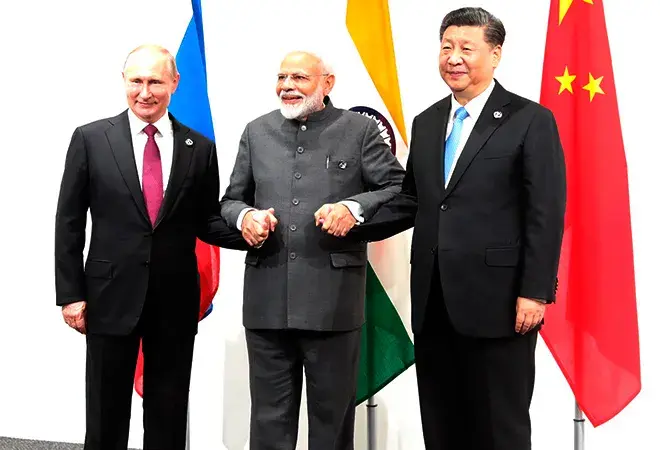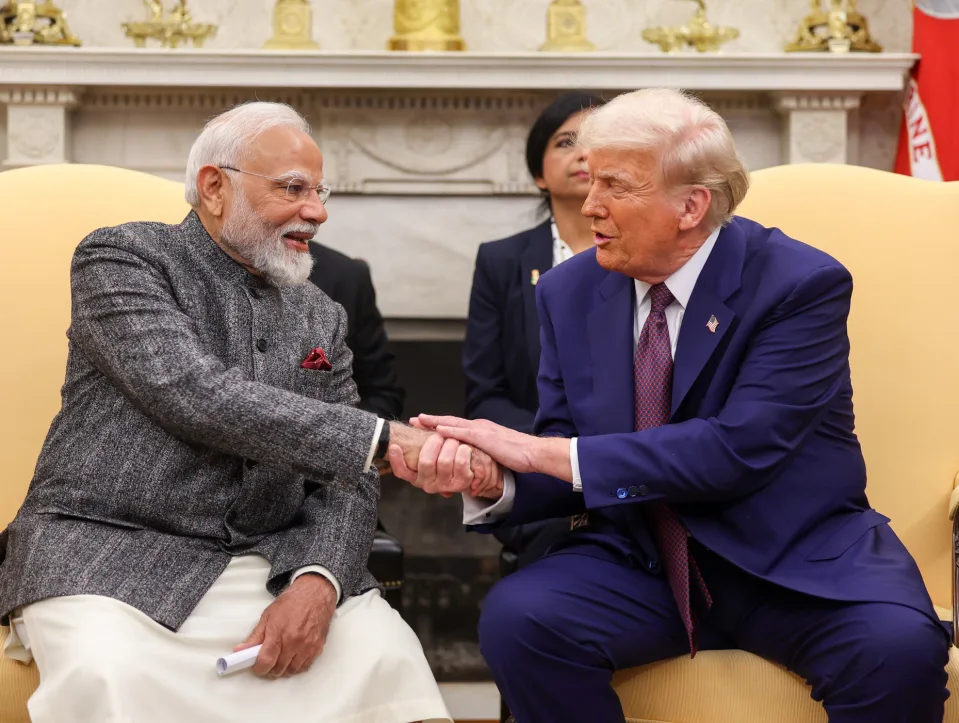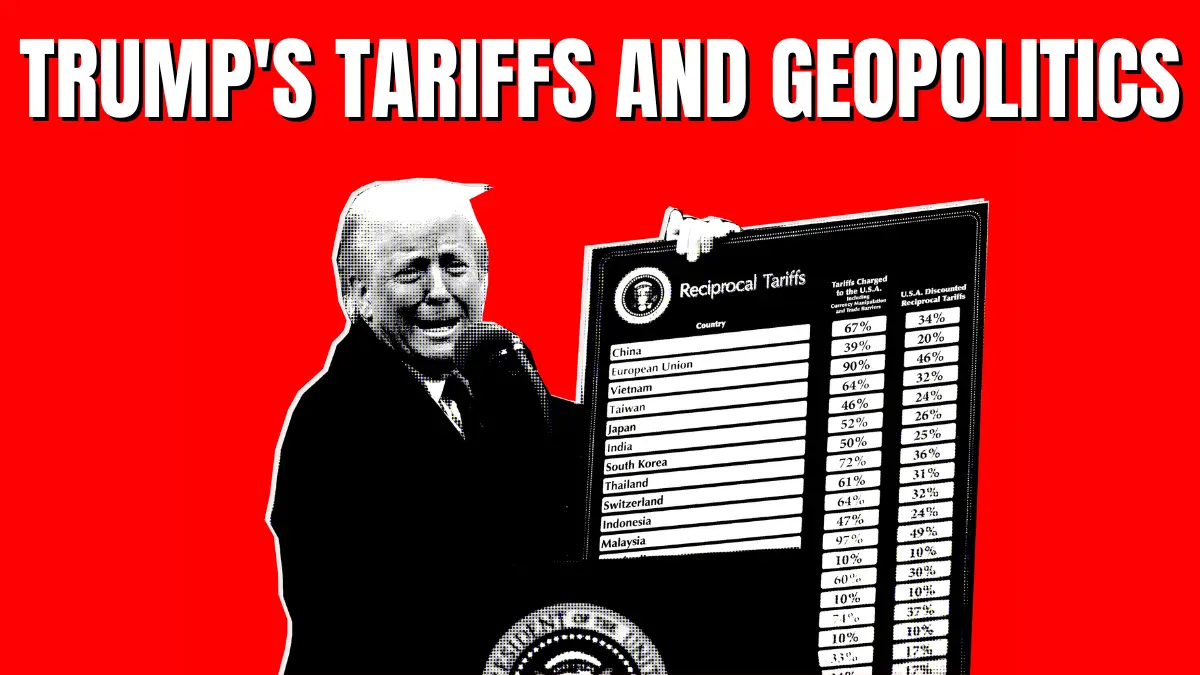Trump’s tariff strategy is hitting its limits as conflicts with Russia, India, and China collide. Here’s how his economic playbook is facing global resistance.
Table of Contents
Trump’s Relentless Tariff Strategy Finally Crashes Into Delicate Geopolitical Reality
Tariffs, tension, and a ticking clock: President Trump’s trademark economic weapon is now colliding with global complexity.
What began as a strategy of pressure and persuasion through punitive trade policies has evolved into something far more complicated—an international juggling act that pits economic ambitions against geopolitical realities.
As Trump prepares to unleash the next wave of tariffs and sanctions, his policy now faces limits—and risks—previously untested.
⛽ The Russia-India-China Triangle: A New Front in the Tariff War

President Trump’s tough-talking tariff strategy is now entangled with one of the world’s most volatile geopolitical puzzles:
- Russia: Trump’s frustration with Putin is boiling over.
- India: Refusing to bend under U.S. pressure.
- China: Locked in a fragile trade détente.
Each country plays a unique role in the global energy and trade ecosystem. But Trump’s threat of secondary sanctions on Russian energy could ripple through India and China, the two largest buyers of Russian oil.
His team is floating options that target specific shadow fleet tankers, vessels allegedly used to dodge sanctions. The intended message? No one is off-limits.
But the unintended consequence? A full-blown global trade fallout.
🔥 Trump vs. Putin: A Relationship on the Edge
“He’s pissed.”
That’s how one Trump insider described the president’s view of Vladimir Putin in recent weeks. Trump’s patience has worn thin as Putin remains defiant and the war in Ukraine drags into a fourth year.
What was once a pragmatic relationship—based on leverage and diplomacy—has now turned to suspicion and hardball tactics. And with no quick resolution in sight, Trump appears ready to escalate.
But there’s a catch.
⏱️ The China Deadline Looms
Trump’s team is also navigating a looming trade truce renewal with China. His goal? Extend the agreement while maintaining a strong position.
The problem: Any secondary sanctions on Russian energy could seriously damage U.S.-China relations. China relies heavily on Russian oil, and Treasury Secretary Scott Bessent has already warned Beijing to brace for impact.
At stake:
- Billions in U.S.-China trade
- Technology export controls
- Market access negotiations
One wrong move, and the fragile détente could collapse.
🇮🇳 The Breakdown with India

India was supposed to be an easier win. But after months of trade negotiations, the talks collapsed.
Trump’s grievances:
- High Indian tariffs on American goods
- India’s ongoing purchases of Russian energy and arms
Trump has long branded India as the “Maharaja of tariffs.” His frustration boiled over as India refused to open its markets enough to meet his standards.
“The president wanted deals that substantially opened markets – everything or near everything,” a senior official said. “India wasn’t close.”
India’s minimal concessions didn’t fly with Trump’s “America First” lens. So now, New Delhi finds itself in Trump’s crosshairs—facing the real possibility of new reciprocal tariffs.
🧠 The Strategy… or Coincidence?
Is this a grand geopolitical strategy? Or just a convenient convergence of conflicts?
Even Trump’s own officials admit this is more of a tactical overlap than a long-term playbook.
As one insider put it:
“We consider a wide range of options, but this is a situation more of convenient coincidence than overarching strategic long-game.”
Still, the combined pressure is mounting—and it’s intentional.
⚖️ The Leverage Factor: Why Now?
There’s a reason Trump feels emboldened: energy prices are under control.
Thanks to:
- Lower global demand
- Rising OPEC+ output
…there’s less risk of a domestic gas price surge—a key reason the Biden administration never pulled the trigger on secondary energy sanctions.
But Trump? He doesn’t have that constraint.
This moment offers him leverage without domestic blowback—a rare window that his team is keen to exploit.
🚨 A Decision Day Is Coming
Trump’s August 1 tariff deadline looms. Meanwhile:
- U.S.-China trade talks remain tense
- India trade talks are frozen
- Putin shows no sign of backing down
Trump’s administration is weighing:
- Full secondary sanctions on Russian energy
- Targeted blacklisting of specific tankers
- New tariffs on Indian imports
- Withholding an extension of the China trade truce
Each move affects the others. And yet, Trump thrives on the brink. His entire second term has been one long string of overlapping deadlines, each weaponized for maximum pressure.
🧩 The High-Risk Game of Economic Chess

This is no longer just about trade. It’s about:
- Global energy flows
- Alliance-building
- Sanctions diplomacy
- Domestic economic optics
Trump’s challenge is threading the needle: applying economic pressure without collapsing the very negotiations he needs to succeed.
The balance is razor thin—and the consequences of a misstep are enormous.
💬 Reader Check-In: What’s Your Take?
We want to know:
- Should Trump use secondary sanctions against Russia?
- Will tariffs on India backfire?
- Can the U.S. pressure China and maintain a truce?
Drop your thoughts in the comments. Your insight might be featured in our next policy breakdown!
🙋♂️ FAQs
Q1: What are secondary sanctions and why do they matter now? A1: These are penalties on third-party countries or companies that do business with sanctioned entities—in this case, Russia. They could hit China and India hard.
Q2: Why are U.S.-India trade talks failing? A2: India’s reluctance to lower tariffs and open its markets widely has frustrated Trump, who sees them as unambitious and protectionist.
Q3: What is the risk with China? A3: Triggering new sanctions on Russian oil could derail the ongoing trade truce with China, potentially reigniting a major economic conflict.
Q4: How does Trump’s position differ from Biden’s on sanctions? A4: Trump is more willing to absorb global pushback now that energy inflation is less of a concern—something Biden avoided during his term.
Q5: When will decisions be made? A5: Major decisions could be made around August 1, Trump’s self-imposed tariff deadline.
